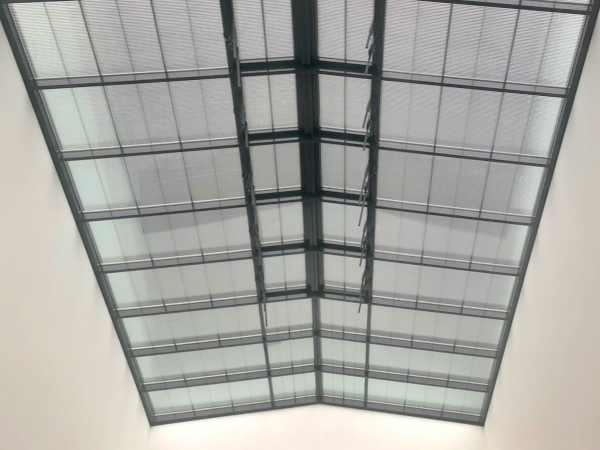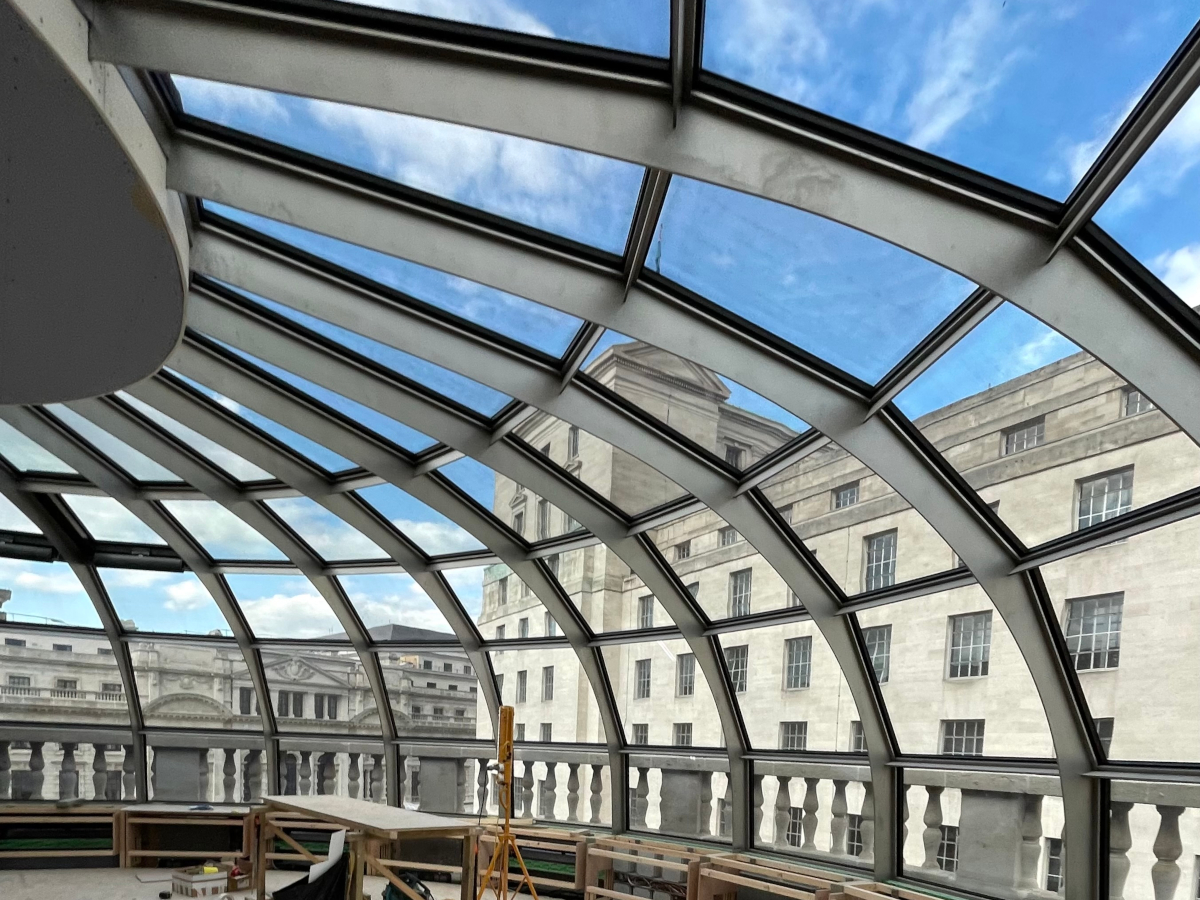Date: 6 June 2012
Visitors to the Grand Palais can admire the latest work by the artist Daniel Buren until the end of June and this work would not have been possible without the help of RENOLIT.
This highly prestigious project which was organised by the French Minister of Culture is designed to underpin Paris' position as the international art capital. The Minister of Culture himself is responsible for inviting the artists. The artists Anselm Kiefer and Richard Serra have been previous exhibitors. And after Anish Kapoor exhibited there in 2010, Frenchman Daniel Buren is now the latest artist whose work has gone on display.
All artists are given the same task, namely to create a large work of art. A really, really large one! For Anish Kapoor’s exhibit, massive fiery-red spheres the same size as suburban apartment buildings were rolled through the 35 metre high hall. The exhibit was a great success and attracted 270,000 visitors over a period of six weeks.
This year, visitors are expected to flock to the Grand Palais in similarly large numbers. Although Daniel Buren's work is equally effective when it comes to filling the space available, it is a great deal more subtle. He has erected his trademark black and white pillars in the time-honoured hall and hung hundreds of steel rings from them at a height which allows people to walk under them. However, the most sensational features are the coloured yet transparent RENOLIT plastic films which are fixed within the rings. Whenever the sun shines through the glass roof of the Grand Palais and then through the film, the floor below is transformed into a sea of overlapping coloured circles. By moving around in the area beneath the rings, visitors can literally swim in colours and experience truly sensational impressions of the surroundings.
Most remarkably, Buren did not request any specially manufactured products when RENOLIT decided to sponsor the work. The film colours in stock were exactly what he had been looking for. The films he used met all his requirements – both in design and technical terms. This is further proof of the enormous range of potential uses for RENOLIT products.
What is known in architecture as a luminous ceiling and can be created using translucent RENOLIT film, looks almost modest when compared to Buren’s method. The reason for this is that Buren's work does not concentrate on the ceiling. Buren has positioned the coloured films as a third level between the roof of the hall and the floor, thus manipulating the traditional boundaries of the room. Buren’s work was created especially for the Grand Palais. It cannot be exhibited anywhere else. Nevertheless, this reference will give numerous architects and interior designers an idea of the sort of effects they could achieve with the help of RENOLIT films when carrying out their own projects.
Various major events, some of which were conceived by Daniel Buren himself and are tailored to his coloured circles, will compliment the main exhibit in the hall in the Grand Palais in Paris. The exhibit will remain on show until 21 June. More than a quarter of a million people may very well be able to see the different ways in which RENOLIT products can be used. Further information is available by visiting www.monumenta.com.
Take a look at the picture gallery.









Add new comment